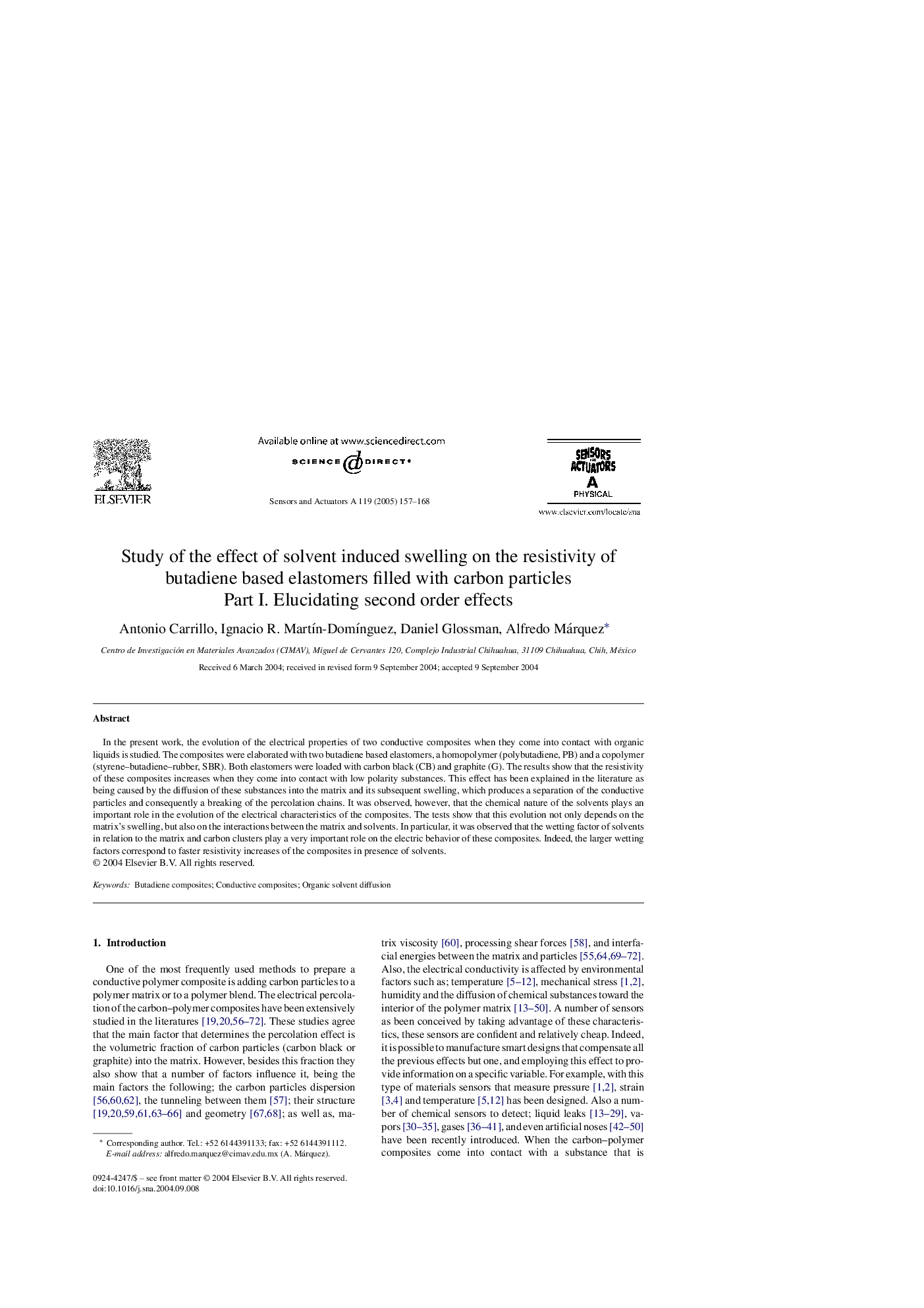| Article ID | Journal | Published Year | Pages | File Type |
|---|---|---|---|---|
| 10409902 | Sensors and Actuators A: Physical | 2005 | 12 Pages |
Abstract
In the present work, the evolution of the electrical properties of two conductive composites when they come into contact with organic liquids is studied. The composites were elaborated with two butadiene based elastomers, a homopolymer (polybutadiene, PB) and a copolymer (styrene-butadiene-rubber, SBR). Both elastomers were loaded with carbon black (CB) and graphite (G). The results show that the resistivity of these composites increases when they come into contact with low polarity substances. This effect has been explained in the literature as being caused by the diffusion of these substances into the matrix and its subsequent swelling, which produces a separation of the conductive particles and consequently a breaking of the percolation chains. It was observed, however, that the chemical nature of the solvents plays an important role in the evolution of the electrical characteristics of the composites. The tests show that this evolution not only depends on the matrix's swelling, but also on the interactions between the matrix and solvents. In particular, it was observed that the wetting factor of solvents in relation to the matrix and carbon clusters play a very important role on the electric behavior of these composites. Indeed, the larger wetting factors correspond to faster resistivity increases of the composites in presence of solvents.
Keywords
Related Topics
Physical Sciences and Engineering
Chemistry
Electrochemistry
Authors
Antonio Carrillo, Ignacio R. MartÃn-DomÃnguez, Daniel Glossman, Alfredo Márquez,
